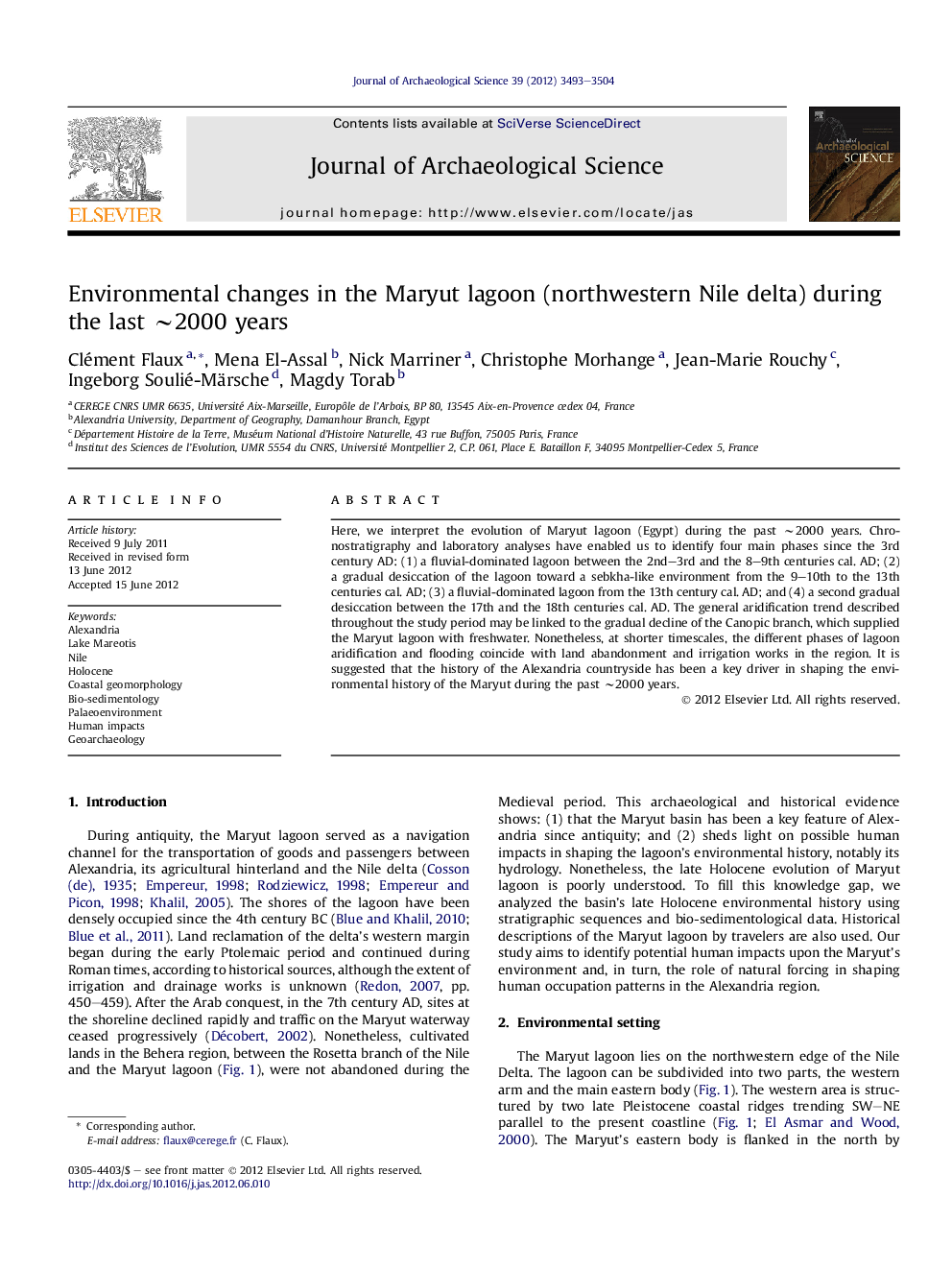| کد مقاله | کد نشریه | سال انتشار | مقاله انگلیسی | نسخه تمام متن |
|---|---|---|---|---|
| 1035642 | 943861 | 2012 | 12 صفحه PDF | دانلود رایگان |

Here, we interpret the evolution of Maryut lagoon (Egypt) during the past ∼2000 years. Chronostratigraphy and laboratory analyses have enabled us to identify four main phases since the 3rd century AD: (1) a fluvial-dominated lagoon between the 2nd–3rd and the 8–9th centuries cal. AD; (2) a gradual desiccation of the lagoon toward a sebkha-like environment from the 9–10th to the 13th centuries cal. AD; (3) a fluvial-dominated lagoon from the 13th century cal. AD; and (4) a second gradual desiccation between the 17th and the 18th centuries cal. AD. The general aridification trend described throughout the study period may be linked to the gradual decline of the Canopic branch, which supplied the Maryut lagoon with freshwater. Nonetheless, at shorter timescales, the different phases of lagoon aridification and flooding coincide with land abandonment and irrigation works in the region. It is suggested that the history of the Alexandria countryside has been a key driver in shaping the environmental history of the Maryut during the past ∼2000 years.
► We reconstruct the hydrological evolution of the Maryut lagoon since ∼2000 years.
► Flooding phases are consistent with agricultural activities and shores occupation.
► Drying-up phases are consistent with the relative abandonment of the region.
► Maryut lagoon is a good example of environment–society interactions.
Journal: Journal of Archaeological Science - Volume 39, Issue 12, December 2012, Pages 3493–3504